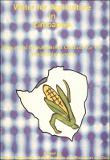| dc.contributor.author | Matiza, Girlmerina | |
| dc.coverage.spatial | Zimbabwe. | en |
| dc.date.accessioned | 2016-06-17T10:30:08Z | |
| dc.date.available | 2016-06-17T10:30:08Z | |
| dc.date.issued | 2000 | |
| dc.identifier.citation | Matiza, G. (2000) Drought relief and irrigation.In: Manzungu, E., Senzanje, A. and van der Zaag, P. (eds.) Water for agriculture in Zimbabwe: policy and management options for the smallholder sector, pp. 197-201. Harare: UZ. | en |
| dc.identifier.isbn | 0-908307-63-2 | |
| dc.identifier.uri | https://opendocs.ids.ac.uk/opendocs/handle/20.500.12413/11759 | |
| dc.description | A position paper on how Zimbabwe could tackle and alleviate periodic drought seasons by investing in long term irrigation agriculture. | en |
| dc.description.abstract | Agriculture is a dominant sector in Zimbabwe contributing 40% of exports, 50% of manufacturing and 70% of employment. The sector carries the heavy burden of food security. It is no wonder then that the performance of the Zimbabwean economy is directly related to the performance of the agricultural sector. This contribution is however compromised by the country's climate. Zimbabwe is situated in a zone of erratic rainfall with only 35% of the area receiving 700 mm annual rainfall that is adequate for intensive and semi- intensive farming. Rainfall is the main factor determining the suitability of land for agricultural production. Land suitable for intensive farming is situated in Natural Regions I and II, and to a lesser extent, in Natural Region III, regions which are endowed with good rainfall. Because of history, these well-endowed areas are mostly under the ownership of the White minority large scale farmers while the majority Black smallholder farmers are situated in the dry arid areas. Sixty percent of the smallholder farmers are situated in the semi-arid zones characterized by low agricultural production on account of the poor rains received there. | en |
| dc.description.sponsorship | Special thanks are due to the Netherlands Organization for International Cooperation in Higher Education (NUFFIC), The Hague, for providing financial support towards the hosting of the workshop upon which this book is based. NUFFIC also met part of the publication costs. The two coordinating committees of the Zimbabwe Programme on Women, Extension, Sociology and Irrigation (ZIMWESI), a NUFFIC-funded inter-university exchange programme in research and training between the University of Zimbabwe and Wageningen Agricultural University deserve special mention for the moral support they gave us. | en |
| dc.language.iso | en | en |
| dc.publisher | University of Zimbabwe (UZ) Publications | en |
| dc.rights.uri | http://creativecommons.org/licenses/by-nc-nd/3.0/ | en |
| dc.subject | Agriculture | en |
| dc.subject | Water | en |
| dc.title | Drought relief and irrigation | en |
| dc.type | Book chapter | en |
| dc.rights.holder | ©Emmanuel Manzungu, Aidan Senzanje, Pieter van der Zaag, 1999 | en |


